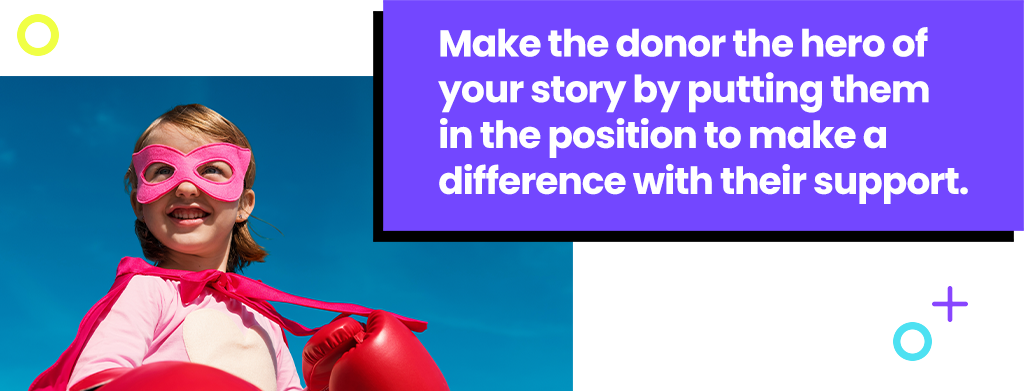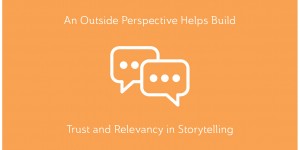Boring storytelling could be holding your nonprofit back.
Think about it. We’ve used the power of storytelling to connect with one another and understand the world around us for centuries. And believe it or not, the framework for telling an effective story has stayed the same!
Yet too many nonprofit narratives stay focused on the organization’s programs and initiatives. We know you’re proud of the work you’re doing. (As you should be 😊)
It’s easy to go on about the great things you’ve accomplished. But your stories should serve a different purpose. Donors can always learn about the intricacies of specific programs on your website if they’d like.
Your stories need to highlight the impact of what those programs achieve, not the details of the initiatives themselves. And they should help your supporters understand their role in making it all possible.

You might be telling the wrong story.
Boring storytelling doesn’t connect to the reasons why your organization exists. And that reason is probably what made someone want to support you in the first place!
Remember, it’s the cause that matters most. Not your specific organization.
But too many nonprofits lose sight of that principle.
Let’s walk through how to define and refine your core message and apply it to your stories. It starts with thinking about your core message in three parts.
First, the why. Why does your organization exist?
Why are you counting on the support of others? And why should the donor care about the problem you’re trying to solve?
Second, the how. But we’re still not talking about the details of how your programs achieve your goals. It’s more about how you approach the issue and your organization’s strengths.
How is what you do unmatched by others? How is your nonprofit different than others with a similar mission?
Finally, the what. Again, it’s not about what your programs and initiatives entail. It’s about what the result looks like.
The what is about the impact a donor can make on a cause they care about through your nonprofit. This is the time to share the results of your work so far and invite your donors to help make a difference.

Using emotion and reason.
You probably have some stories that fit the criteria above in mind. But this framework for avoiding boring storytelling is just the first step.
Stories that resonate have an emotional component that inspires your audience to act. And they will provide evidence to help your supporters understand that your nonprofit is the best way for them to make the biggest difference.
You know your audience and what drives them. So, use your data to identify stories that speak to what your audience cares about most.
Then, make sure you can back it up with meaningful measurements that prove what you do works! You need to satisfy both the logical and emotional aspects of the human decision-making process to avoid boring storytelling.
It’s all about getting your audience to think, “someone needs to do something!” and then providing a clear path to make themselves the hero.
READ MORE: Making your nonprofit’s call-to-action more attractive.

Every story needs a hero!
A lot of nonprofits get bogged down talking about “our organization’s impact” or “how we’re changing lives.”
It’s too easy to take all the advice above and still miss the mark. Luckily, you may only need minor adjustments in your messaging to be more donor centric.
For example, instead of saying, “our work makes it possible,” say, “the support of donors like you makes it possible.” Or instead of “we helped 2,000 people,” say, “your support made it possible for us to help 2,000 people.”
This small language change can make a huge difference in the power of your story. It puts the donor in the position to make a real difference in the story you’re telling. It helps them see themselves as the hero that creates a happy ending.
Boring storytelling feels passive. So, focus on finding ways to make your narratives more engaging and donor centric!
READ MORE: It’s time to rethink your nonprofit’s appeal letter.
Let’s face it.
Boring storytelling is a problem for too many nonprofits. But the issue may not be with what you’re saying but how you’re saying it!
Remember, you have an inside look into your nonprofit’s daily activities. Your donors don’t. So, you can’t share stories that speak to your staff and expect to influence supporters with your message.
Your donors aren’t interested in every detail of your programs. They want to know why your nonprofit is the best way to make a difference. And telling an effective story is the best way to do it!
So, click here to download our new storytelling eBook to learn more and amplifi your outreach!









